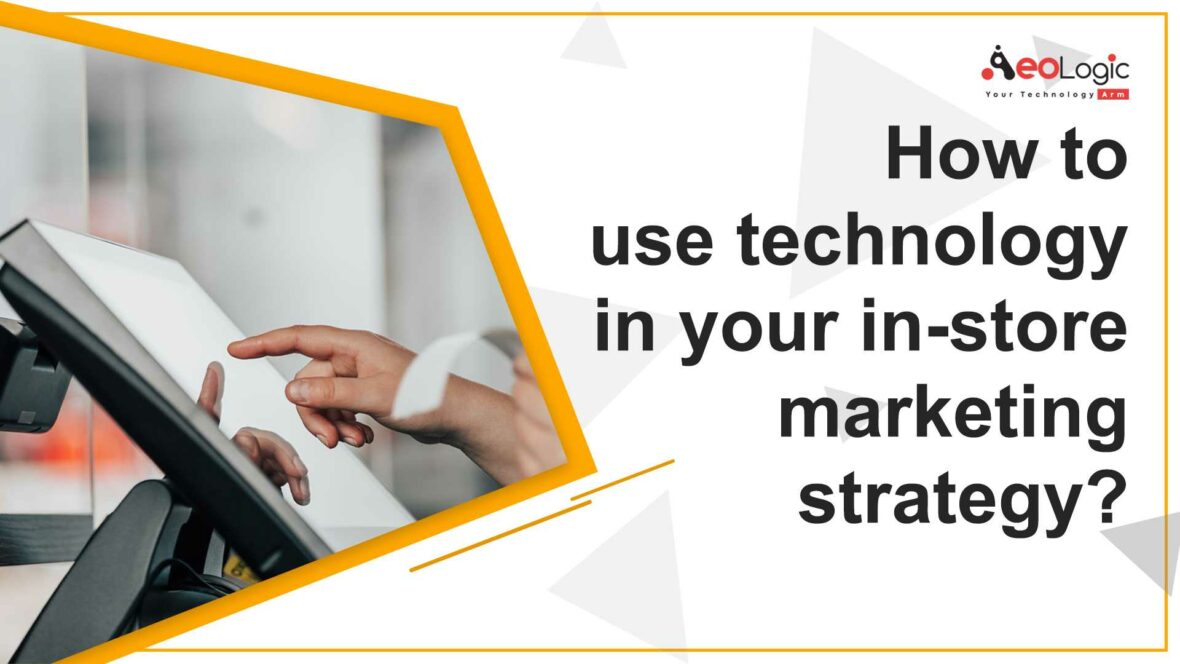As we know, marketing involves all of a company’s efforts to attract customers and sustain connections with them. Marketing, at its most basic level, aims to match a company’s products and services with people who desire to use them. Thus, matching products to customers ultimately ensures the profitability of a business. In this blog, you will explore how to use technology in your in-store marketing strategy?
As we move to a digital world, marketing strategies are shifting to meet evolving consumer demands. Also, brick-and-mortar retailers are relying upon digital solutions to strengthen in-store marketing campaigns. Let’s take a closer look at this.
What Exactly is In-Store Marketing?
In-store marketing refers to marketing strategies that focus clients or buyers while they are in a physical store. In-store marketing, as opposed to marketing to customers in order to drive them into a business, focuses on engaging and converting customers after they have arrived at the store.
You can use a variety of in-store marketing strategies to engage customers, customize their experience, and ultimately improve your income. Unlike eCommerce platforms, brick-and-mortar stores allow for real-time interaction with clients, which is essential for capturing buyers’ attention. When you have your clients’ attention, the likelihood of them acquiring your stuff increases.
What Is the Purpose of In-Store Marketing?
Brands are using the best marketing strategies for their customers, but with so many marketing and promotional messages hitting them, how can your brand stand out? With an incredible in-store marketing approach!
There are lots of reasons to improve your in-store marketing strategy. With four of marketing methods to choose from, in-store marketing is often overlooked but it should be at the top of the priority list. Hence, there is a requirement for in-store marketing. Let’s look at the reasons why we need Instore marketing.
1. Increasing Brand Recognition
In-store marketing can help brands tell their story. While most people feel that storytelling is only for online spaces, brick-and-mortar stores offer the advantage of building a real-time connection with customers, which can increase consumer loyalty.
2. Product Promotion
In-store marketing can be used by retailers to offer new products and explain their features and benefits. They can also utilize it to boost sales by emphasizing current specials.
3. Upselling/Cross-Selling
Stores can employ in-store marketing to increase sales by emphasizing package deals for further discounts, promoting seasonal products, or describing characteristics of lesser-known products.
4. Customer Learning
Customer education is an essential component of any marketing endeavor. Brands might employ in-store marketing to increase customer knowledge of available options or the advantages of certain options.
Also Read: How Bright is the Future of Retail Technology in India?
How To Use Technology In In-Store Marketing Strategy?
Marketing has had to evolve in order to fulfill these changing customer expectations. In-store advertising is no longer restricted to a few static signs or cardboard end-cap promos. In-store marketing is currently supplied through a variety of digital methods that make in-store advertising more exciting for customers and more effective for marketing, thanks to the proliferation of media channels and video display alternatives.
Store marketing allows brands to market to the customers when they are in their store. It has complete control over the customer experience, defines how visitors interact with their environment, and finally drives in-store customers to make purchases. Let’s look at the use of technology in in-store marketing strategies:
Provide Free WiFi
One of the easiest ways to get people to come into your store is to give them free WiFi. Customers receive your marketing messages as they sign in. It will help you to promote various products and services on offer. WiFi marketing also has branding benefits that people like. They will become more patient while waiting at your company. This can imply customers are more satisfied and return to your company in the future.
Essential Information to Customer
While entertainment is a necessary part of the customer experience, so is information. Customers choose your brand because they believe it is the most reliable for them. Because they believe you provide something they can’t get anywhere else.
Audio Communication
Overhead messaging enables retailers to communicate directly with in-store customers about deals. They talk about deals, promotions, specific store areas, and special events.
Collaborative Kiosks
Customers receive high-quality service from in-store kiosks. They are useful when looking for product pricing, reviews, and other information. Kiosks are small, temporary booths that are placed in high-traffic areas. Kiosks are generally like promoting products and services.
Analyze Foot Traffic of Customers
Businesses can track foot traffic using free customer WiFi. Many businesses use foot traffic to create heatmaps.
Start Using In-Store Marketing Strategies For Your Company
You can improve your in-store experience and convince more customers to buy from your business with just a few simple actions. Check out these 5 and more in-store marketing strategies to boost sales at your retail store. There are several in-store retail marketing strategies to consider. However, the 7 Ps of marketing strategies are the most popular. It involves the product, pricing, promotion, place, people, procedure, and physical evidence.
FAQ’s
What is a store strategy?
A retail strategy is the method you employ to create new products or services. This strategy includes several components, such as site, shop, media and communications, and price.
What are the 4 Ps and 4 Pc of retail marketing strategies?
Most retailers base their retail marketing strategy on The 4 Ps and The 4 Cs:
4 Ps- Product, Price Place, Promotion.
4 Cs- Consumer, Cost, Convenience, Communication.






